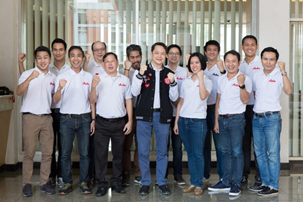AirAsia has put most of its aircraft into temporary hibernation.
Since late March, most of the airline group’s 282 aircraft have been in hibernation at airports around Asia. But what happens to the aircraft during this time?
“Our fleet of aircraft may be in hibernation, but there is still much to be done to maintain these technologically advanced pieces of machinery. Our engineers have to make sure that all aircraft will be kept in excellent condition when we are ready to take to the skies again,” says Banyat Hansakul, Head of Engineering for AirAsia Group.
AirAsia has since activated the Long Term Parking Procedures as part of the Aircraft Maintenance Manual (AMM) prescribed by the aircraft manufacturer Airbus. The stringent manual outlined procedures and recurring maintenance actions to preserve the safety and airworthiness of the aircraft during a prolonged parking period.
Keeping the fleet on the ground
It is not easy overseeing the engineering and maintenance for the airline group during these challenging times. “The first question we asked ourselves was, where do we keep all of these 282 aircraft? Our biggest regional hubs are Kuala Lumpur and Bangkok, but even klia2 and Don Mueang International Airport do not have enough parking bays for all of our aircraft.
“In Kuala Lumpur, we resolved to park some of our aircraft at the cargo terminal instead of our operating base at the klia2 terminal; while in Bangkok, there is not enough space even after parking some of our aircraft on the taxiway which was transformed into temporary parking bays by the airport authority. After much deliberation, we decided to move some aircraft to nearby hubs such as Phuket International Airport and Utapao Rayong-Pattaya International Airport.
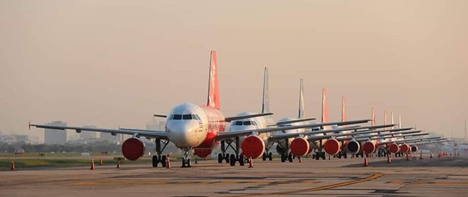
“We also have to identify the parking duration for each of the aircraft as the maintenance actions are different for aircraft parked for less than a month, between 1 to 6 months, or between 6 months to a year.
“Most of our aircraft fall into the first and second categories, and we have to keep a few aircraft in active service at each hub to be deployed for Humanitarian Assistance and Disaster Relief (HADR) missions or cargo and charter operations,” shares Banyat.
Keeping from the external threats
After deciding on the parking location and duration for each of the aircraft comes to the most labour intensive step – covering up parts of the aircraft exposed to the environment.
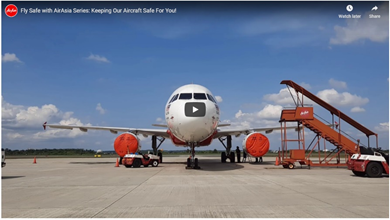
Any cavities or exposed equipment of the aircraft will have to be shielded using approved covers by the manufacturer to protect it against elements such as dust, insects, birds or any other foreign objects that might damage the aircraft system. These include the engines, the Auxiliary Power Unit’s (APU) inlet and outlet, air data probes (e.g. the pitot probes, static ports or other antenna-like tubes you see on the aircraft body), and depending on grounding time, even the landing gear will be wrapped to prevent corrosion.

Engineers run daily inspections of the aircraft to check for technical anomalies such as leakage of engine oil or hydraulic fluid from the aircraft while ensuring that all these covers on exposed equipment are always intact.
Besides daily inspection, periodic flushing and cleaning of the air data probes and other parts of the aircraft are also required to make sure that there is no residue build-up as the aircraft remained mostly static on the ground.
“The daily inspection is very important as we will never know what challenges mother nature brings other than the changing weather. For instance, not long after the hibernation was announced in March, my team of engineers found a bird’s nest under one of the wings of our Airbus A330 aircraft parked at Don Mueang International Airport.
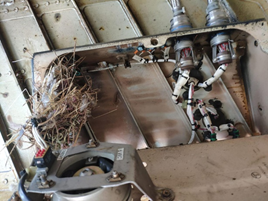
“Birds, bees or other insects nesting on idle aircraft is a known problem for all airlines around the world, so it is not an unusual occurrence. We immediately called in the relevant authorities to help us escort our ‘stowaway guests’ away from the aircraft safely, no animals were harmed in the process,” says Banyat.
Keeping it ready for you
To ensure that the prolonged pressure put on the wheels of the aircraft will not cause any flat spots, the aircraft is also required to be towed forward and backwards or be jacked up for wheel spinning from time to time to release the pressure on the tyres.
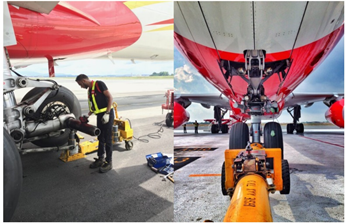
The engineers will also power up the aircraft engine and APU periodically according to the schedule outlined in the AMM to keep a tap on the engines’ health.
In preparation for a longer period of ground time, some of the settings of the aircraft will have to be reconfigured too, such as disconnecting the battery, activating “ditching mode” to close the air valve and other air inlets of the aircraft (so no air gets into the aircraft cabin), as well as disengaging the air data probe and window heating system to prevent the melting of air data probe covers.
For an airline group that operates hundreds of flights a day, this hibernation of our aircraft fleet also presents a rare opportunity for deep cleaning and upkeep maintenance of the cabin. All the removable panels in the cabin will be opened and thoroughly cleaned, this includes the cabin wall panels, the galley (the ‘pantry’ where cabin crew prepares food), lavatory, and even the cockpit overhead panel. The carpet and the curtains will be washed, and all surfaces in the cabin such as the armrests and tray tables will be wiped with a high-grade disinfectant.
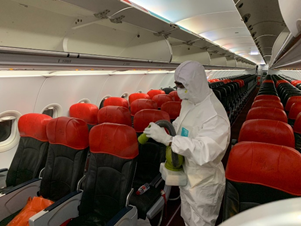
“Maintaining such a big fleet of aircraft is definitely not an easy feat, even putting these aircraft into hibernation requires around-the-clock work and careful coordination among our team of engineers and ground teams.
“But to rest is to walk further. When this pandemic is over, we will be ready to carry our guests again, and it is paramount that we keep these aircraft safe and well maintained for our guests in the meantime,” shares Banyat.
